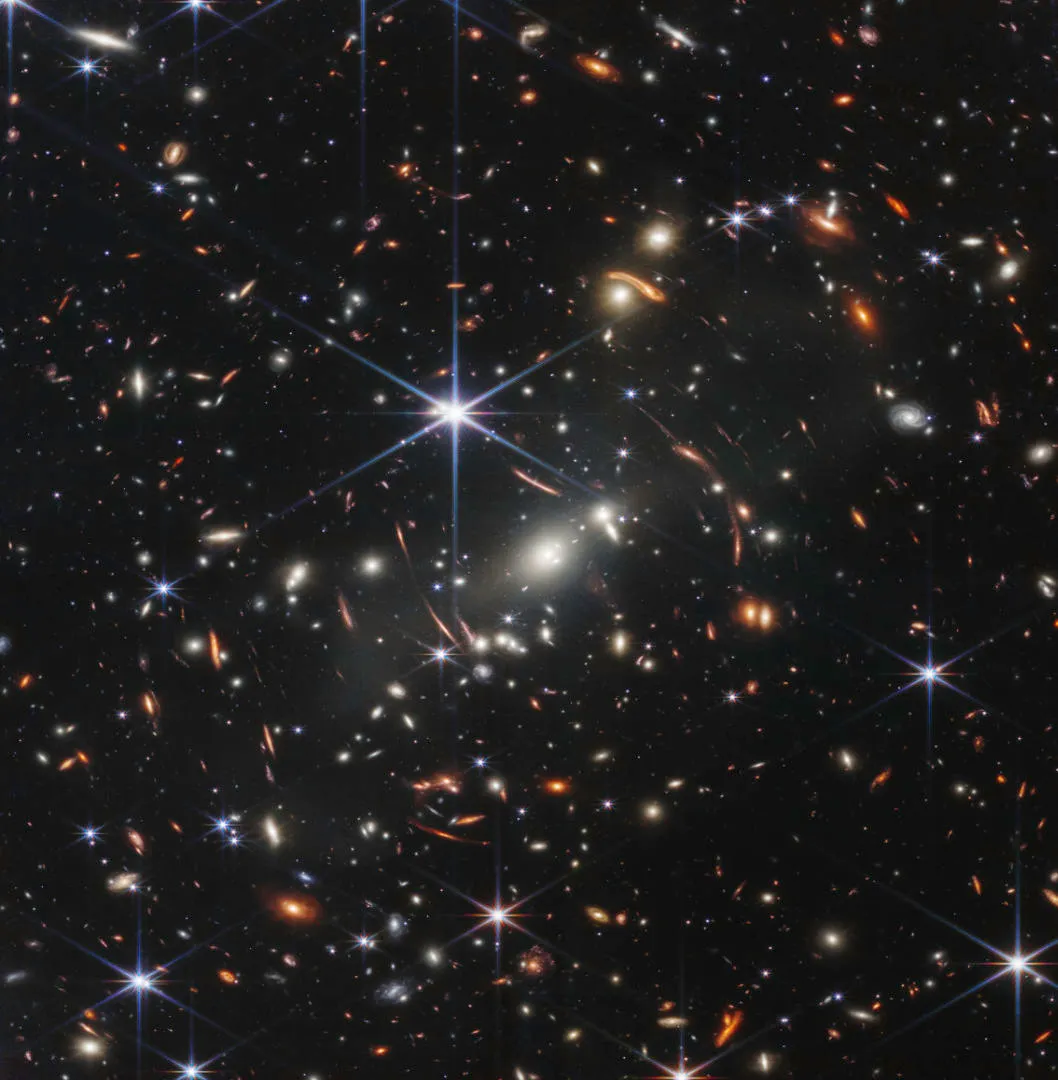How soon is it possible for life to have formed in our Universe?
Earth is around 4.5 billion years old, so is this how long it takes for the ingredients and conditions necessary for life to be forged in the Universe?
The James Webb Space Telescope has found carbon in a galaxy just 350 million years after the Big Bang.
Carbon is a key ingredient for life, and the discovery marks the earliest detection of any element in the Universe other than hydrogen.
An international team of astronomers led by the University of Cambridge in the UK observed a young galaxy in the early Universe and found it contains surprising amounts of carbon.

Studying metals in the Universe
In astronomy, 'metals' refers to elements heavier than hydrogen or helium.
The very early Universe consisted mostly of hydrogen, with small amounts of helium and lithium.
And, as the saying goes, we all formed from star stuff.
Ever other element that makes up the Universe we see today was formed inside a star.
These elements are distributed throughout the Universe by stellar explosions known as supernovae, meaning that a star that ends its life in a dramatic explosion will seed the next generation of stars by spreading the ingredients out into space.
Over time, more metals are formed, and after billions of years, the Universe is able to support rocky planets like Earth, and life.

Finding the ingredients for life
"The very first stars are the holy grail of chemical evolution," says Dr Francesco D’Eugenio, from the Kavli Institute for Cosmology at Cambridge and lead author of the study.
"Since they are made only of primordial elements, they behave very differently to modern stars. By studying how and when the first metals formed inside stars, we can set a time frame for the earliest steps on the path that led to the formation of life."
Carbon can form into grains of dust that eventually grow over time to become the earliest planets.
It's a key ingredient for life and key for the formation of life on Earth.
"Earlier research suggested that carbon started to form in large quantities relatively late – about one billion years after the Big Bang," says co-author Professor Roberto Maiolino, also from the Kavli Institute.
"But we’ve found that carbon formed much earlier – it might even be the oldest metal of all."
By peering deeper into space, astronomers can effectively look back in time, since it takes millions or even billions of years for the light from distant objects to reach us.
Another example of this was Webb's discovery of JADES-GS-z14-0, a galaxy that exists just 290 million years after the Big Bang.

The team behind this study used the Webb Telescope to observe a galaxy that existed about 13 billion years ago, just 350 million years after the Big Bang.
The galaxy is compact and low-mass: 100,000 times less massive than the Milky Way.
"It’s just an embryo of a galaxy when we observe it, but it could evolve into something quite big, about the size of the Milky Way," said D’Eugenio. "But for such a young galaxy, it’s fairly massive."
Webb’s Near Infrared Spectrograph (NIRSpec) analysed light from the young galaxy by breaking it into a spectrum .
The team could then study the chemical fingerprints in the spectrum and discern different elements.
Analysis showed a detection of carbon and tentative detections of oxygen and neon, with further observations required to confirm this.
"We were surprised to see carbon so early in the universe, since it was thought that the earliest stars produced much more oxygen than carbon," says Maiolino.
"We had thought that carbon was enriched much later, through entirely different processes, but the fact that it appears so early tells us that the very first stars may have operated very differently."
"These observations tell us that carbon can be enriched quickly in the early universe," says D’Eugenio.
"And because carbon is fundamental to life as we know it, it’s not necessarily true that life must have evolved much later in the universe. Perhaps life emerged much earlier – although if there’s life elsewhere in the universe, it might have evolved very differently than it did here on Earth."
Francesco D’Eugenio et al. ‘JADES: Carbon enrichment 350 Myr after the Big Bang.’ Astronomy & Astrophysics (in press). DOI: 10.48550/arXiv.2311.09908

